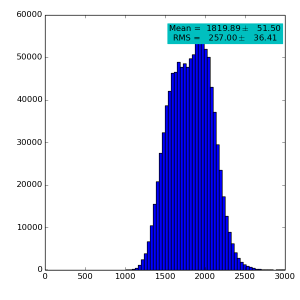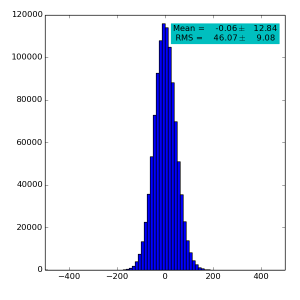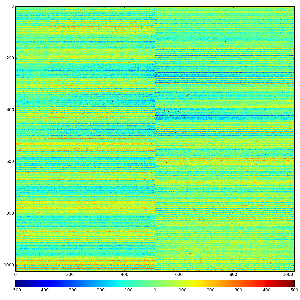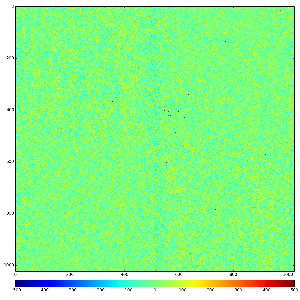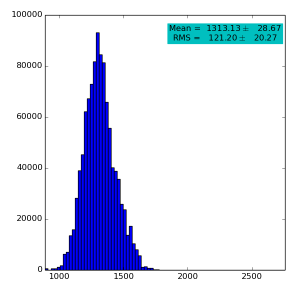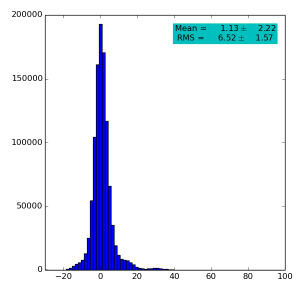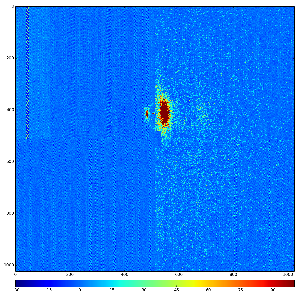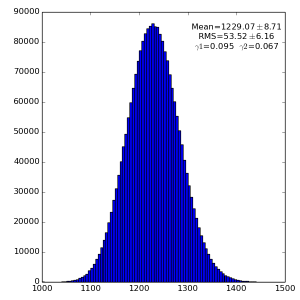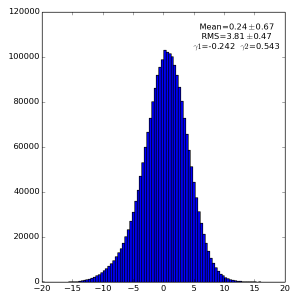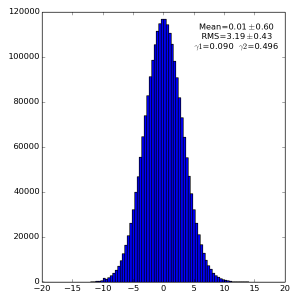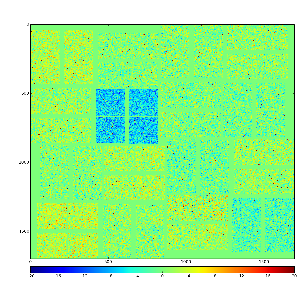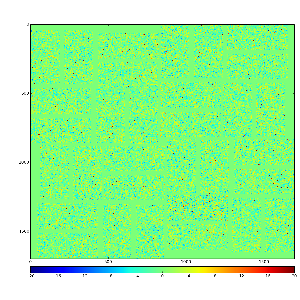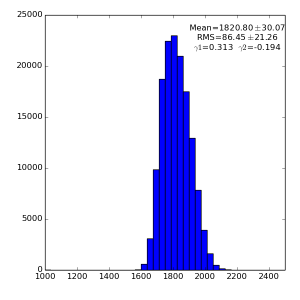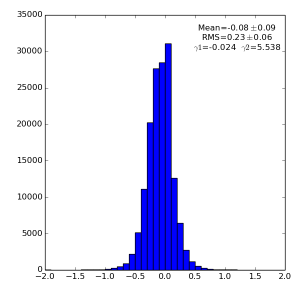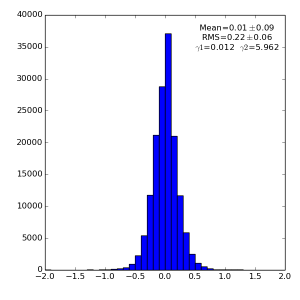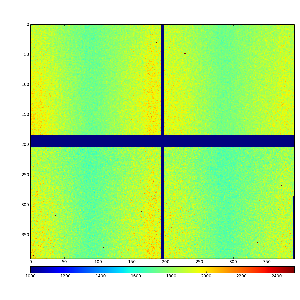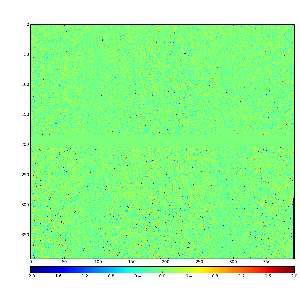Content
Algorithms
In this note we discuss common mode correction algorithms implemented in psana module ImgAlgos::NDArrCalib.
We use algorithms earlier developed for CSPADs from ImgAlgos::GlobalMethods(#1) and from psalg package (#2 and #3).
Selection of algorithm for particular device can be controlled by the parameters in common_mode type of calibration constants.
#1 - common mode peak finding algorithm
common_mode parameters for CSPAD and CSPAD2x2
1 50 50 100
- par[0] - algorithm #
- par[1] - maximal deviation of the peak mean from 0
- par[2] - maximal allowed value of the peak RMS
- par[3] -threshold on number of pixels in the ADU bin in the peak finding algorithm
for other detectors
- par[4] - number of segments for common mode evaluation
- par[5] - segment size (number of pixels for common mode evaluation)
par[6] - stride (step for jump to the next pixel)
For example:
1 50 50 100 8192 128 1
#2 - MEAN evaluation
- par[0] - algorithm #
- par[1] - maximal threshold on intensity to evaluate mean for low intensities
- par[2] - maximal allowed common mode correction
par[3] - length of consecutive pixel array for common mode evaluation
For example, for pnCCD1 1000 1000 128
- The algorithm loops over the data and evaluates consecutive arrays of specified length (which might represent for example a row of pixels in a readout chip) and finds the mean value for values below a threshold, ignoring masked pixels. It corrects all the data if the calculated common mode is less than the maximal allowed correction. The median algorithm is more stable in many cases and is recommended.
#3 - MEDIAN evaluation
Parameters are the same as in #2. The algorithm is as above, except that it calculates the median, or the average of the two median points if there are an even number passing the selection criteria.
Test of the common mode correction for pnCCD
To test implementation of algorithms in ImgAlgos::NDArrCalib we use the same data sets as in 2014-03-25-Ankush-CommonModeNoise.pdf
Use data from experiment amob5114
High gain pnCCD run 121
2(or 3) 1000 1000 128
Spectra for 1) raw data, 2) subtracted pedestals, 3) subtracted common mode correction algorithm #2 and 4) algorithm #3:
Images 1) for subtracted pedestals and 2) common mode correction algorithm #2:
High gain pnCCD run 329
2(or 3) 1000 1000 128
Spectra for 1) raw data, 2) subtracted pedestals, 3) subtracted common mode correction algorithm #2 and 4) algorithm #3:
Images 1) for subtracted pedestals and 2) common mode correction algorithm #2:
Summary for pnCCD
Common mode correction for pnCCD
- gives significant effect in low gain mode and is negligible in high gain mode
- algorithm #2 gives the best results, #3 a little bit worse, #1 - does not work for pnCCD
Test of common mode correction for CSPAD
Use cxi83714-r0136 with
1 10 10 100
Spectra for 1) raw data, 2) subtracted pedestals, 3) subtracted common mode correction algorithm #1:
Images 1) for subtracted pedestals and 2) common mode correction algorithm #1:
Summary for CSPAD
Common mode correction for CSPAD works with algorith #1 and shows significant effect.
Test of common mode correction for CSPAD2x2
Use meca1113-r0045 with
1 50 10 (100) - last parameter is set by default
Spectra for 1) raw data, 2) subtracted pedestals, 3) subtracted common mode correction algorithm #1:
Images 1) raw data and 2) subtracted pedestals with common mode correction algorithm #1:
Summary for CSPAD2x2
Common mode correction for CSPAD2x2 in this example shows minor improvement.
References
2014-03-25-Ankush-CommonModeNoise.pdf - stand-alone test of common mode correction for pnCCD
psana - Module Catalog - Module ImgAlgos::NDArrCalib
